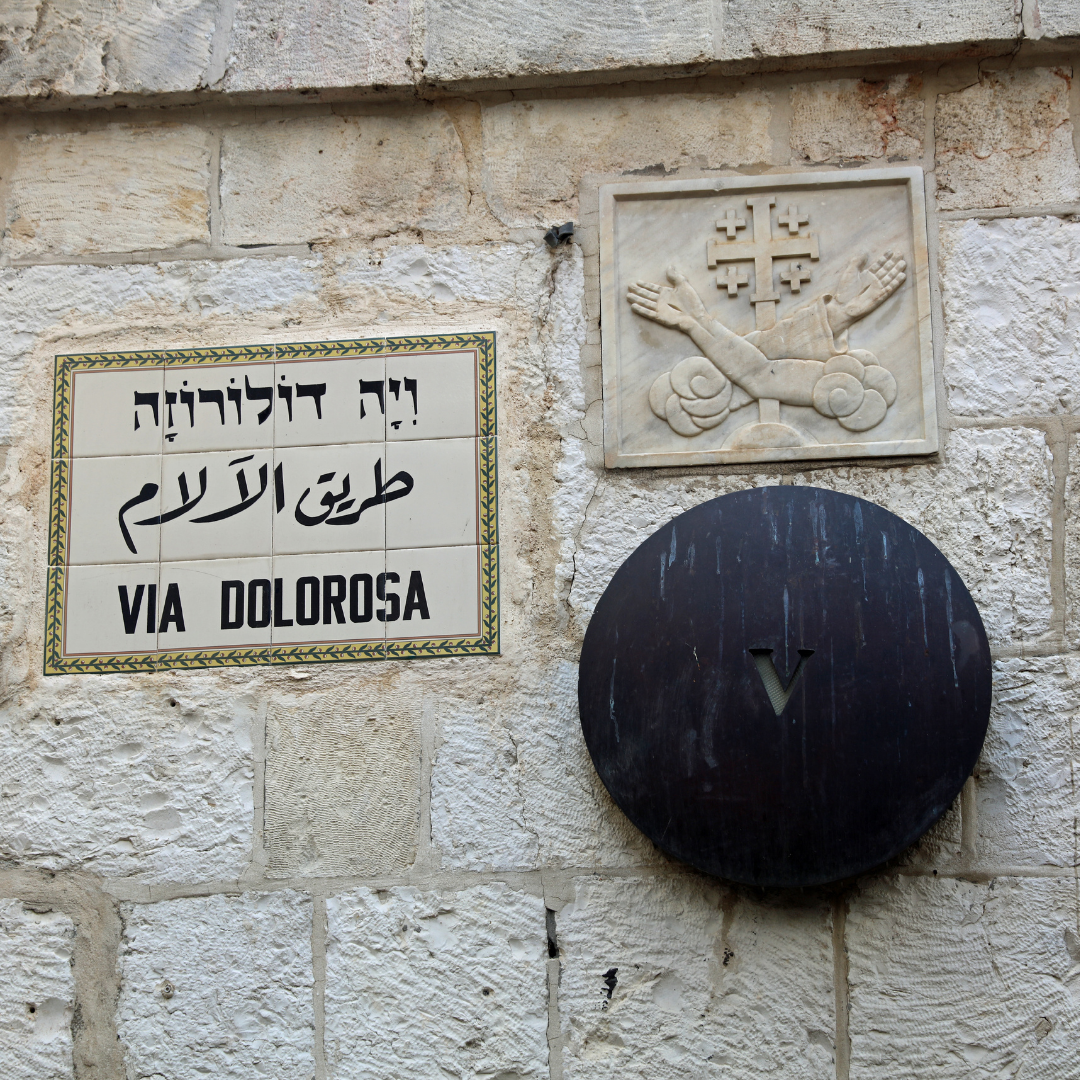
Kelly Guest lauds how Our Lady, the Franciscans, and most of all, Sacred Tradition have given us the beautiful Lenten devotion of Stations of the Cross.
Every Friday, particularly during Lent, the Church makes it possible for us to make a spiritual pilgrimage, accompanying Our Lord on His way to Mount Calvary.
The Stations of the Cross grew out of the Via Dolorosa, the route in the Holy Land that retraces the path Jesus trudged from the praetorium to Golgotha. Tradition tells us that Our Lady was the first to rewalk the way to our salvation, pondering all that had happened in her heart. So, in a way, Mary gave us the beautiful, meditative devotion of Stations of the Cross.
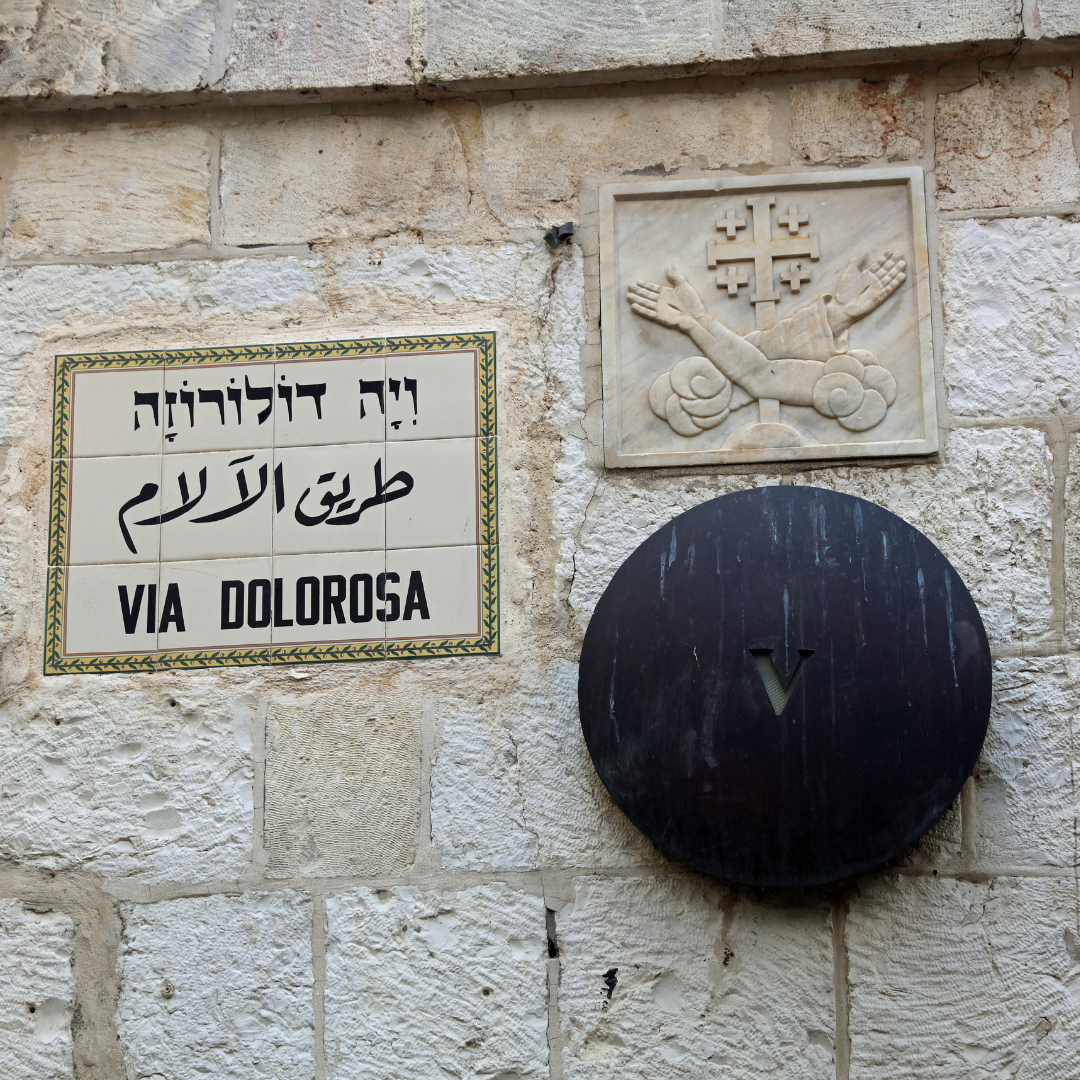
The Stations of the Cross did not always exist, however, as they do today. It took some time for this devotion to develop from a physical pilgrimage into the spiritual pilgrimage we make every Friday during Lent.
In the early Middle Ages, with the takeover of the Holy Land by the Turks, pilgrimages to Jerusalem became too dangerous for Christians. When tensions settled down, though, believers once again began to visit the holy sites of Jesus’ life and death. Saint Francis was among them.
The Muslims eventually allowed Francis’ followers custody of the Holy Sepulcher in the early 1300’s. Franciscans also settled permanently in Bethlehem, which makes sense given St. Francis’ devotion to the Nativity. Therefore, in 1342, Pope Clement VI proclaimed the Franciscans custodians of the Holy Places in the Holy Land, and they have been caring for these sites ever since.
Not everyone, though, can make the trip to the Holy Land. By the 15th century, Franciscan friars began erecting series of outdoor shrines throughout Europe to duplicate the Via Dolorosa. There would be anywhere from seven to thirty “stations.” Stations that lead along the walkway to a church may have just a few shrines, whereas countryside shrines that had more room could have many more stations. No matter what, though, only Franciscans, as official custodians, could erect these shrines.
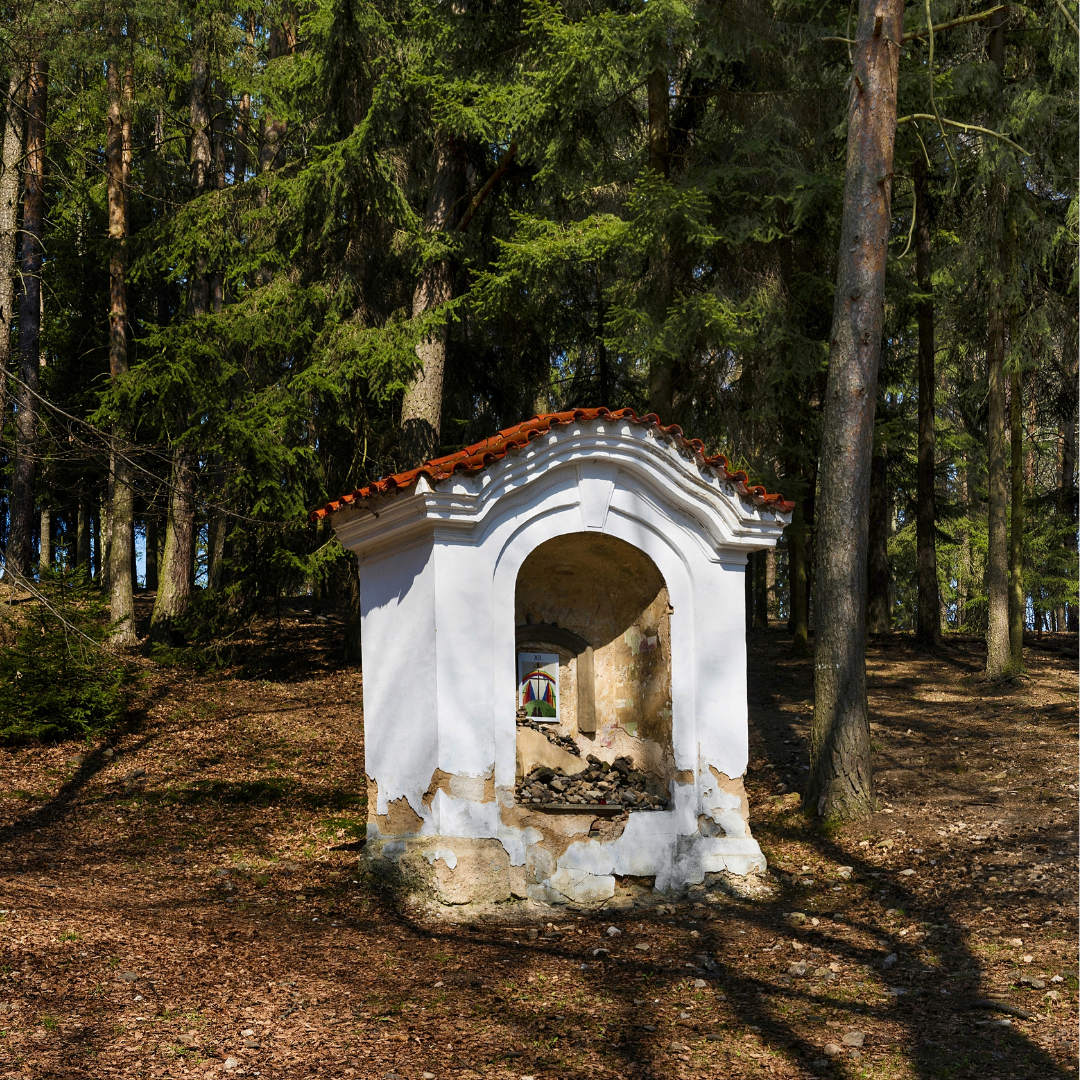
Then, in 1686, the friars asked and received permission from Pope Innocent XI to place stations within their monasteries. For the first time, Stations of the Cross were prayed inside a church building. The practice became so popular that in 1731, Pope Clement XII extended the right to have stations placed in all churches, provided that a Franciscan priest erected them with the permission of the local bishop. It was at this time that the number of stations was fixed to fourteen. Finally, in 1862, the bishops themselves were given permission to hang the Stations of the Cross in all their churches. Today, one would be hard pressed to find a Catholic church whose walls are not adorned with fourteen stations.
We owe a debt of gratitude to the Franciscans for preserving this beautiful tradition. Indeed, Tradition played a large part in the Stations. After all, only nine out of the fourteen stations are clearly Scriptural.
For instance, Jesus falling is not actually mentioned in any of the four Gospels. Since the Romans made Simon of Cyrene carry the cross behind Jesus, it is logical to assume that Our Savior was having a difficult time carrying it Himself. Orally, it has been passed down that Jesus fell multiple times. As a matter of fact, some of the early Stations of the Cross had as many as seven falls. The Church, however, when fixing the number of stations, settled upon three. This is just enough times to bolster the fact that no matter how often we fall, God gives us the mercy and strength we need to rise and continue on our journey, too.
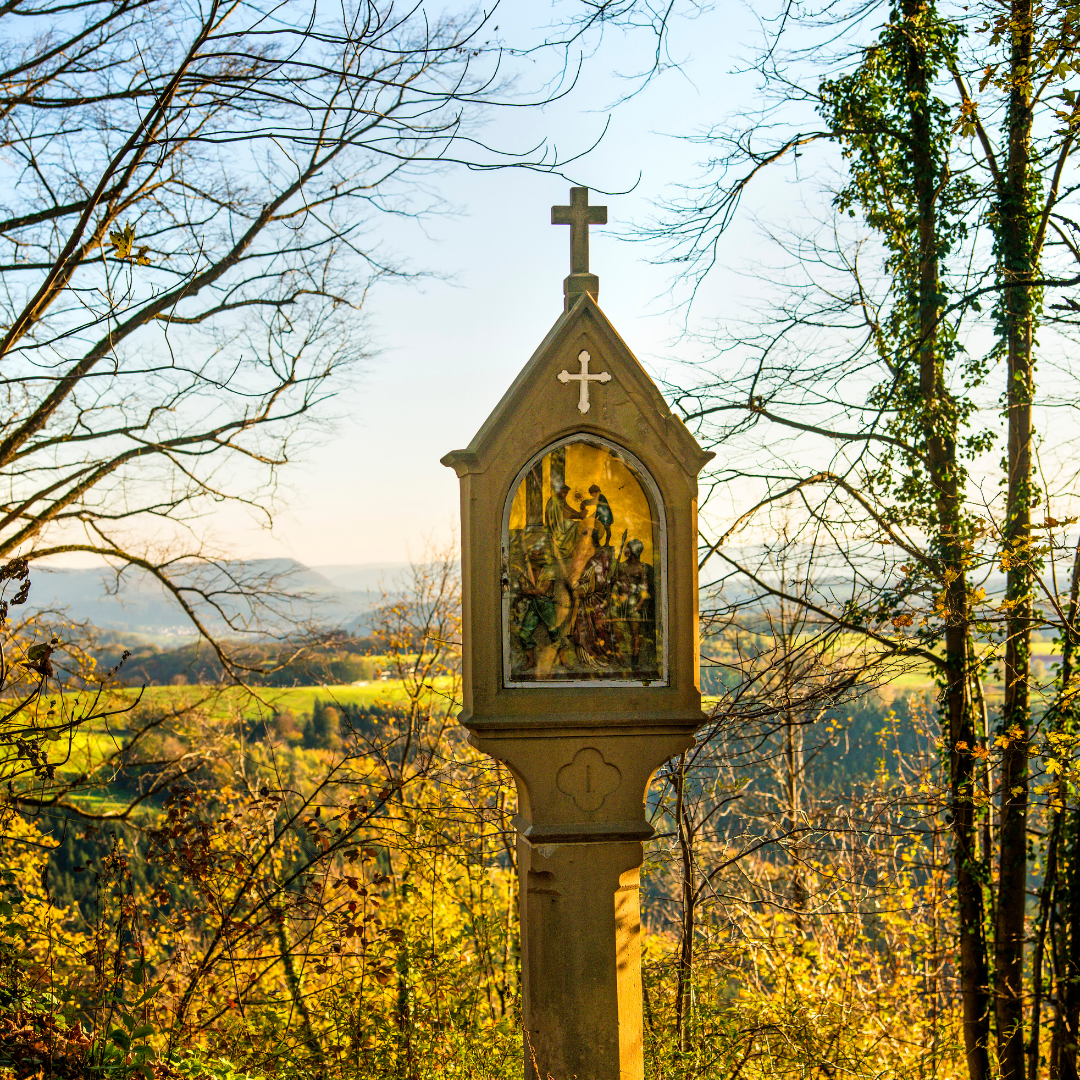
Our Lady is only mentioned in Scriptures to be at the foot of the cross during Jesus’ Passion. Tradition tells us, though, that Mary met Jesus on His way to the Crucifixion. How important it is for us to know that Mary was there when He needed her! By the third station, Jesus has already fallen. Mary’s intercession is so effective that immediately after her fourth station, the fifth station has Simon of Cyrene helping Jesus carry the cross. Then the station after that, Veronica finds the courage to wipe the Face of Jesus. Along with the story of the wedding at Cana, the fourth station teaches us the power of Mary’s intercession.
Though many Christians know the story of Veronica’s heroic act, she is not in the Bible. Veronica wiping the Face of Jesus is made known to us by Tradition. This sixth station reassures us that those little acts of kindness and compassion will be rewarded. Even if it doesn’t seem like much, we should always do what we can to help. Furthermore, Veronica’s bravery in reaching out to Jesus, despite being surrounded by Roman soldiers and sneering Jews, screams to us, “Be not afraid!”
At the thirteenth station, Jesus is taken down from the cross. We know from all four Gospels that Joseph of Arimathea receives permission from Pilate to remove the body of Jesus from the infamous gibbet. Scriptures also reveals that Nicodemus helped Joseph bury the body and that some of the women who followed Jesus were there as well. Our Lady, however, is not mentioned. Still, every depiction of this station has Joseph and Nicodemus laying Jesus’ body in Mary’s arms. Michelangelo even carved the beautiful image of the Pieta depicting this scene. Tradition carried this heart-wrenching yet tender image down through the ages to inspire and awaken in us greater love, compassion, and sorrow for our sins.
The Stations of the Cross witnesses to the importance and beauty of Tradition. Think of the stories we would have lost if the Spirit did not inspire Tradition and keep It alive. Consider the prayers and teachings that would have been lost. Imagine a Lent without Stations of the Cross.
What is your favorite Station of the Cross to reflect upon? I would love if you would share that reflection.
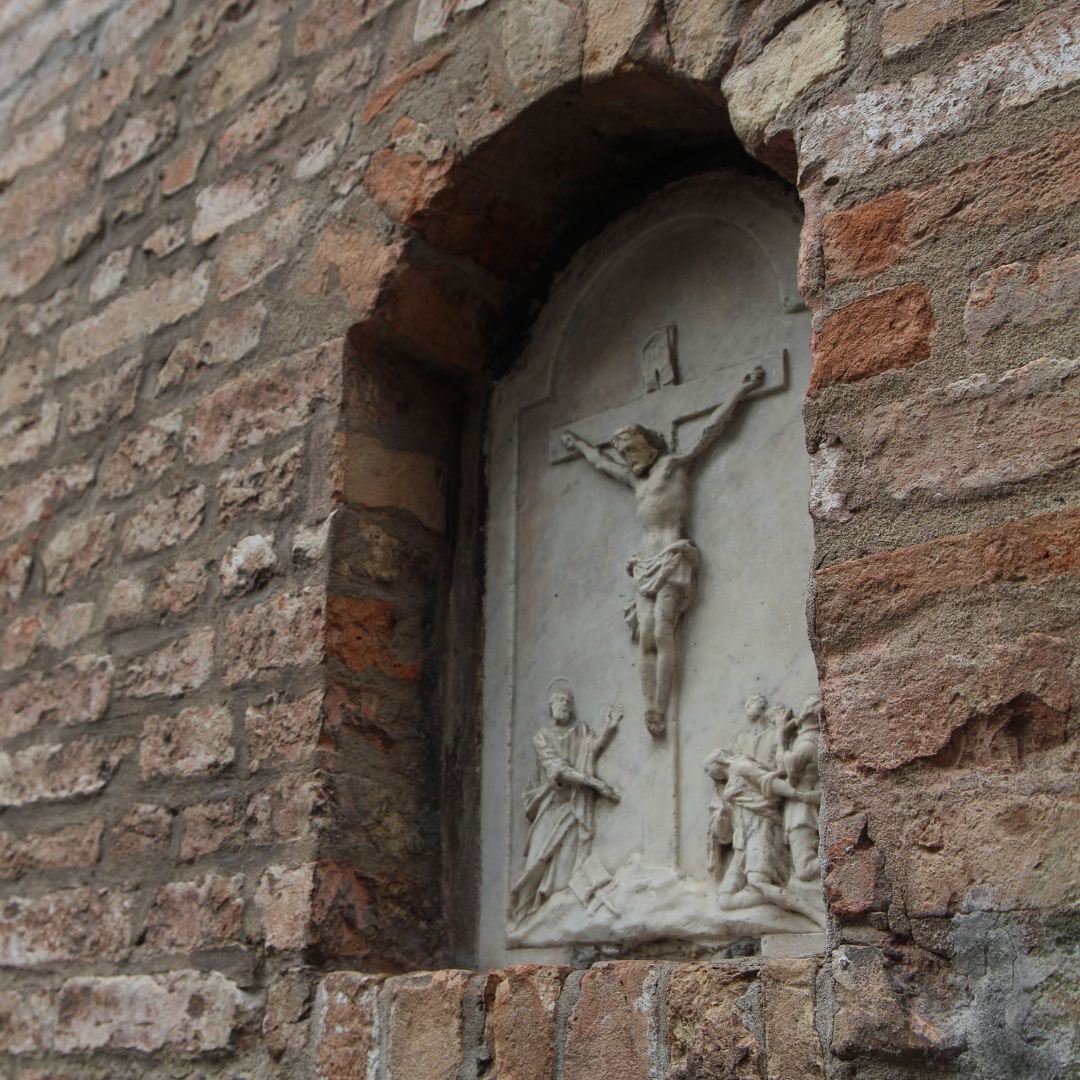
Copyright 2022 Kelly Guest
Images: Canva Pro
About the Author

Kelly Guest
Kelly Guest is the author of Saintly Moms: 25 Stories of Holiness. For over 30 years, she has worked in various ministries in the Church, beginning with her five years as a Dominican sister. She is now the Director of Family Faith Formation at her parish. She lives with her husband Paul and their nine wonderful children in the rolling country hills of Maryland.


.png?width=1806&height=731&name=CatholicMom_hcfm_logo1_pos_871c_2728c%20(002).png)
Comments